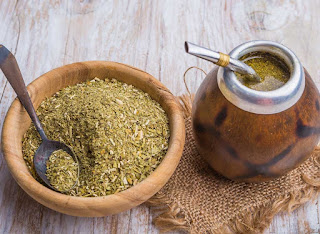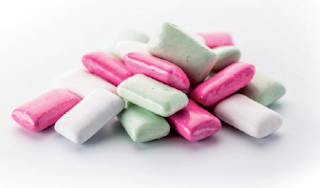Blueberries
Blueberries serve a wide range of functions
for improving mental function. Most notably, regular blueberry
consumption has been shown to improve memory function. Furthermore,
blueberries are rich in antioxidants, helping to prevent free radical
damage. Still not convinced? Research has found that blueberries can
also reverse age related declines in motor function, balance, and
coordination.
Flax Seeds
Flax seeds are rich in brain-healthy fats that are directly used
by the brain to build and protect neurons and regulate the environment of the brain.
To boost your brain to the max, have a tablespoon or two of flax seeds every day. Other brain-boosting seeds are hemp and chia.
Avocados
Don’t let the avocado’s fat content fool you.
It’s a healthy fat that promotes blood flow, keeping your mind
functioning at its peak. Avocados are
rich in a fatty acid called oleic acid, which helps to build the
coating of insulation, known as myelin (found in white matter of the
brain.) Myelin helps information travel at speeds of up to 200 miles per
hour.
Neurons without myelin (gray matter) process information at slower speeds.
We can make some oleic acid on our own if we have other good fats in
our diet, but avocados are a tasty way to include it in our diet.
Oleic acid makes up over a third of the fat in myelin. Thus, avocados
(and other sources like olives, almonds and pecans) are helpful for
speedy messaging within your brain.
Chocolate
Chocolate is one of nature's most concentrated sources of theobromine, a
mild, natural stimulant and molecular "cousin" of caffeine. However,
unlike its cousin, theobromine does not strongly stimulate the central
nervous system, nor does it have the same "eye-opening" power.
Flavanols in chocolate have the ability to help maintain brain function may arise from their
ability to protect brain cells, improve brain metabolism and blood flow,
which helps preserve memory, the researchers said.
Broccoli
Beets
Scientists at Wake Forest University determined that natural nitrates in
beets can increase blood flow to the brain, thereby improving mental
performance.
High concentrations of nitrates are found in beets, as well as in celery, cabbage and other leafy green vegetables like spinach and some lettuce. When you eat high-nitrate foods, good bacteria in the mouth turn nitrate into nitrite. Research has found that nitrites can help open up the blood vessels in the body, increasing blood flow and oxygen specifically to places that are lacking oxygen.
Walnuts
High concentrations of nitrates are found in beets, as well as in celery, cabbage and other leafy green vegetables like spinach and some lettuce. When you eat high-nitrate foods, good bacteria in the mouth turn nitrate into nitrite. Research has found that nitrites can help open up the blood vessels in the body, increasing blood flow and oxygen specifically to places that are lacking oxygen.
Walnuts
Diets containing two percent, six percent, or nine percent walnuts, when
given to old rats, were found to reverse several parameters of brain
aging, as well as age-related motor and cognitive deficits, says James
Joseph, PhD, of the U.S. Department of Agriculture Human Nutrition
Research Center at Tufts University in Boston.
Findings from the studies by Joseph and his colleague Barbara
Shukitt-Hale, PhD, show for the first time that shorter chain fatty
acids found in plants, such as walnuts, may have beneficial effects on
cognition similar to those from long chain fatty acids derived from
animal sources, which have been reported previously.
Walnuts are loaded with omega-3s, which make them the ultimate "brain food."Studies have linked low consumption of omega-3s to depression and decreased cognitive function.
Did you know that walnuts also seem to triple melatonin levels in the body? Melatonin is one of the body's sleep regulating hormones, so if you're tired of counting sheep at night, maybe a pre-bedtime snack of walnuts would help you get some shuteye.
Peppermint
Not
only is peppermint calming for the stomach, but it also helps better
your brain. According to the history, people used peppermint to enhance
memory and to treat other conditions even since 3000 years ago.
The main effect of peppermint (the fresh herb, oil or tea) is represented by a significant improvement of the blood flow to the brain. In addition, peppermint is believed to increase the concentration power. Peppermint contains significant amounts of flavonoids. These are a type of antioxidants that prevent aging of the brain, improve the immune system and neutralize or diminish the action of the oxidative substances.
In the 1990s, researchers at University of Cincinnati found that a whiff of peppermint helped test subjects concentrate and do better on tasks that required sustained concentration. Joel Warm, a professor of psychology who conducted the research with his late colleague William Dember, said there is more than a bit of truth in the peppermint theory.
"Not only do you get an improvement [in focus] with peppermint, you get a change in response that affects alertness in target detection," he said.
Bryan Raudenbush, an associate professor of psychology at Wheeling Jesuit University in West Virginia, found that athletes who had a sniff of peppermint performed better than those who didn't.
The main effect of peppermint (the fresh herb, oil or tea) is represented by a significant improvement of the blood flow to the brain. In addition, peppermint is believed to increase the concentration power. Peppermint contains significant amounts of flavonoids. These are a type of antioxidants that prevent aging of the brain, improve the immune system and neutralize or diminish the action of the oxidative substances.
In the 1990s, researchers at University of Cincinnati found that a whiff of peppermint helped test subjects concentrate and do better on tasks that required sustained concentration. Joel Warm, a professor of psychology who conducted the research with his late colleague William Dember, said there is more than a bit of truth in the peppermint theory.
"Not only do you get an improvement [in focus] with peppermint, you get a change in response that affects alertness in target detection," he said.
Bryan Raudenbush, an associate professor of psychology at Wheeling Jesuit University in West Virginia, found that athletes who had a sniff of peppermint performed better than those who didn't.
Turmeric
Is it a coincidence that elderly residents of rural
India, who eat large amounts of curry, appear to have the lowest
incidence of Alzheimer’s in the world? Researchers find that the
widely used spice might contain compounds which can help prevent
neurological diseases. Researchers believe that part of the reason for
the low
level of brain injury in India is that, over a lifetime, consuming
turmeric may actually have a protective effect on the brain and nervous
system. It's not an easy hypothesis to prove, but Schubert began by
extracting several compounds from the spice. He found that at least one
compound, curcumin, has protective effects on brain cells of lab animals
with neurological injuries. Another study found that folks who reported
consuming turmeric from occasionally to very often performed better on
memory tests.
Apples
Here's a new reason to munch on an apple a day: Apples are a leading
source of quercetin, an antioxidant plant chemical that keeps your
mental juices flowing by protecting your brain cells. According
to researchers at Cornell University, quercetin defends your brain cells
from free radical attacks which can damage the outer lining of delicate
neurons and eventually lead to cognitive decline. To get the
most quercetin bang for your buck, be sure to eat your apples with their
skins on since that's where you'll find most of their quercetin.
Cinnamon
Beta-amyloid plaques are one of the trademarks of Alzheimer's
disease. The other is tangles in the brain made of tau proteins that can
cause brain cells to die. Emerging research from the University
of California at Santa Barbara reveals that two compounds in cinnamon
-- proanthocyanidins and cinnamaldehyde -- may inactivate these tau
proteins. While this research is still in its infancy, a sprinkle of cinnamon on your oatmeal or yogurt certainly couldn't hurt.
Yerba Mate
Chewing Gum
Rosemary
Coconut Oil
MCTs bypass bile metabolism and go directly to your liver where they are converted into ketones. The liver then immediately releases the ketones into the bloodstream where they are transported to the brain to be used as fuel. Research has shown that the ketone bodies produced by MCTs provide a stable source of energy for the brain during periods of low blood sugar without the neurological risks associated with high blood sugar.
This is why ketones appear to be the preferred source of brain food in patients affected by diabetes or any neurodegenerative condition such as Alzheimer's, Parkinson's, ALS, & Multiple Sclerosis, etc. One of the leading authorities on MCT research is Dr. Mary Newport. She has shown that ketone bodies may help the brain recover from lack of oxygen induced brain death in newborns through adults. Additionally, ketones can help the heart patient recover from a heart attack and they can effectively shrink cancerous tumors.
Pomegranate Juice
Results of the study found that the group of mice who received supplementation with pomegranate juice (PJ) presented a 50% reduction in the beta-amyloid brain plaque at the end of the trial. In conclusion, active antioxidant compounds in pomegranates can 'ingest' the beta-amyloid deposits in the brain and prevent the decline of cognitive function in people prone to developing Alzheimer's disease.
The vast number of compounds in PJ, along with the evidence that these compounds may act together in a synergistic fashion, suggests that isolated components of pomegranate may not be as effective as dietary supplementation with either the whole fruit or its juice.
Thanks for reading! What do you think?




















0 Comments